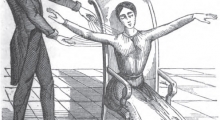
The practice of hypnosis is not just about the words we use, but also about the energy and confidence we exude. Developing a hypnotic gaze and a commanding presence is essential for true success in the art of hypnosis.
One of the secrets to developing this magnetic presence is to work on your inner state. One of the most effective ways to do this is through breath work. By practising deep, slow breathing, you can release tension in the body and clear the mind, allowing you to exude a sense of calm and confidence.
Another key aspect of inner preparation for hypnosis is to develop a clear vision of your desired outcome. This can be done through daily meditation, where you focus on a mental image of yourself successfully hypnotising someone. By visualising yourself in this way, you are training your mind to believe in your ability to achieve this outcome.
In addition to these practical hints, it is also important to remember that the development of a hypnotic gaze and magnetic presence is a process that takes time and practice. It is not something that can be achieved overnight. But with consistent effort and dedication, you can develop the inner strength and confidence needed to become a masterful hypnotist.
In conclusion, the secret to true success in hypnosis lies not just in the words we use, but in the energy and confidence we exude. By developing a hypnotic gaze and a commanding presence, and by working on your inner state through breath work and symbolic visualisation, you can tap into your true potential and take your hypnosis practice to new heights.
- Practise deep breathing exercises to calm the nervous system and activate the solar plexus, which is the centre of emotions and impulses. This will help to develop a sense of calm within you.
- Meditate daily, focusing on creating a "mental matrix" that will help you achieve success. Imagine yourself hypnotising someone and controlling your thoughts. Set a goal to become a skilled hypnotist and visualise yourself achieving this goal.
- Practice self-hypnosis on a regular basis to improve your ability to focus and control your thoughts. This will help you to become more confident and assertive in your interactions with others.
- Learn to use non-verbal cues such as body language, eye contact and facial expressions to influence others. These skills are essential for effective hypnosis and persuasion.
- Surround yourself with positive and supportive people who can help you to achieve your goals. Seek out mentors and role models who can guide you on your journey to becoming a skilled hypnotist.
- Finally, be patient and persistent in your efforts. Remember that mastering the art of hypnosis takes time and practice. Stay focused on your goals and don't give up, even if progress seems slow at first.








